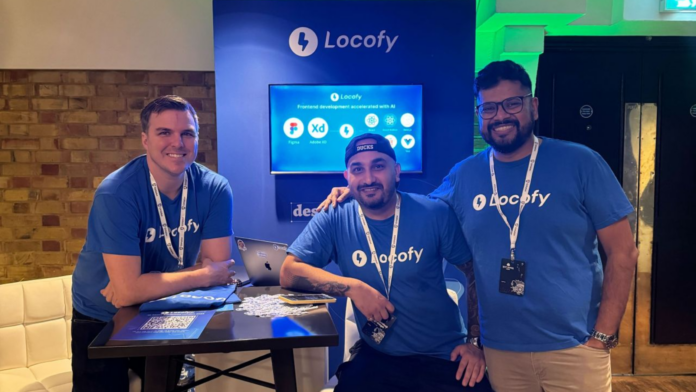In the bustling tech landscape of Singapore, a new star is rising. Locofy, a promising startup, is making waves with its groundbreaking tool, Lightning, designed to convert Figma and AdobeXD prototypes into functional code in just one click. This innovation is poised to redefine the tedious process of coding user interfaces into an efficient, streamlined task.
Developed by Locofy, a company backed by heavyweights like Accel, Lightning emerges as a game-changer in frontend development. Founders Honey Mittal and Sohaib Muhammed, inspired by the advancements in Large Language Models (LLMs) like ChatGPT, developed Lightning to combat the pressing issues of developer shortages and the consequential burnout. This tool is more than a convenience; it’s a necessity in today’s fast-paced tech world.
The core of Lightning lies in its simplicity and efficiency. It functions as a Figma plugin, automating up to 80% of the frontend development workload. This means that lean startups and small teams can shift their focus from the nitty-gritty of coding to more crucial aspects like market strategy and product development.
Initially launching for Figma, Lightning is set to broaden its horizons. Later this year, it will extend its compatibility to other design tools, including AdobeXD, Penpot, Sketch, Wix, and potentially even Canva and Notion. This expansion is a testament to Locofy’s commitment to making frontend development accessible and efficient for a diverse range of platforms.
Investing over $1 million in development, the team behind Lightning sought to create a tool that caters to startups and customer-centric enterprises with limited resources. Building Lightning and its Large Design Models (LDMs) required ingenuity and an in-depth understanding of various AI-based techniques. This tool is not just a product; it’s a culmination of cutting-edge technology and innovative thinking.
Locofy’s journey began with Locofy Classic in 2021, which introduced a five-step process for design conversion. However, learning from user feedback and technological advancements, the founders evolved these steps into a unified, one-click solution with Lightning. This evolution from multiple steps to a single-click process underscores Locofy’s commitment to continuous improvement and user-centric design.
What sets Lightning apart is its sophisticated blend of AI techniques. Each step in the design-to-code process utilizes a unique combination of neural networks, graph-based models, and heuristics, fine-tuned to deliver precise and functional code. This AI-driven approach not only speeds up the process but also ensures high-quality output.
Once the frontend code is generated, users are presented with an interactive preview and the flexibility to fine-tune the code before exporting. This blend of automation and customization offers the best of both worlds — efficiency and control.
Since its inception in 2021, Locofy has attracted significant investment, raising $7.5 million. This financial backing reflects the tech community’s confidence in Locofy’s vision and its potential impact on the industry.
Looking ahead, Locofy aims to extend its platform beyond mere design-to-code functionality. Envisioning a comprehensive suite of tools for building design systems, integrating with backend services, and even hosting full apps, Locofy is set to become a one-stop solution for frontend development.
While currently in a free beta phase, with plans to monetize in 2024, Locofy is exploring innovative business models that differ from traditional SaaS and developer tools. Their pricing strategy, focusing on the scale of usage, reflects a deep understanding of the diverse needs of their user base.
In summary, Locofy’s Lightning is not just another tool in the developer’s arsenal. It’s a symbol of the future of frontend development — where efficiency, innovation, and user experience converge to create something truly revolutionary. As Locofy continues to grow and evolve, it’s clear that they are not just following trends; they are setting them.











